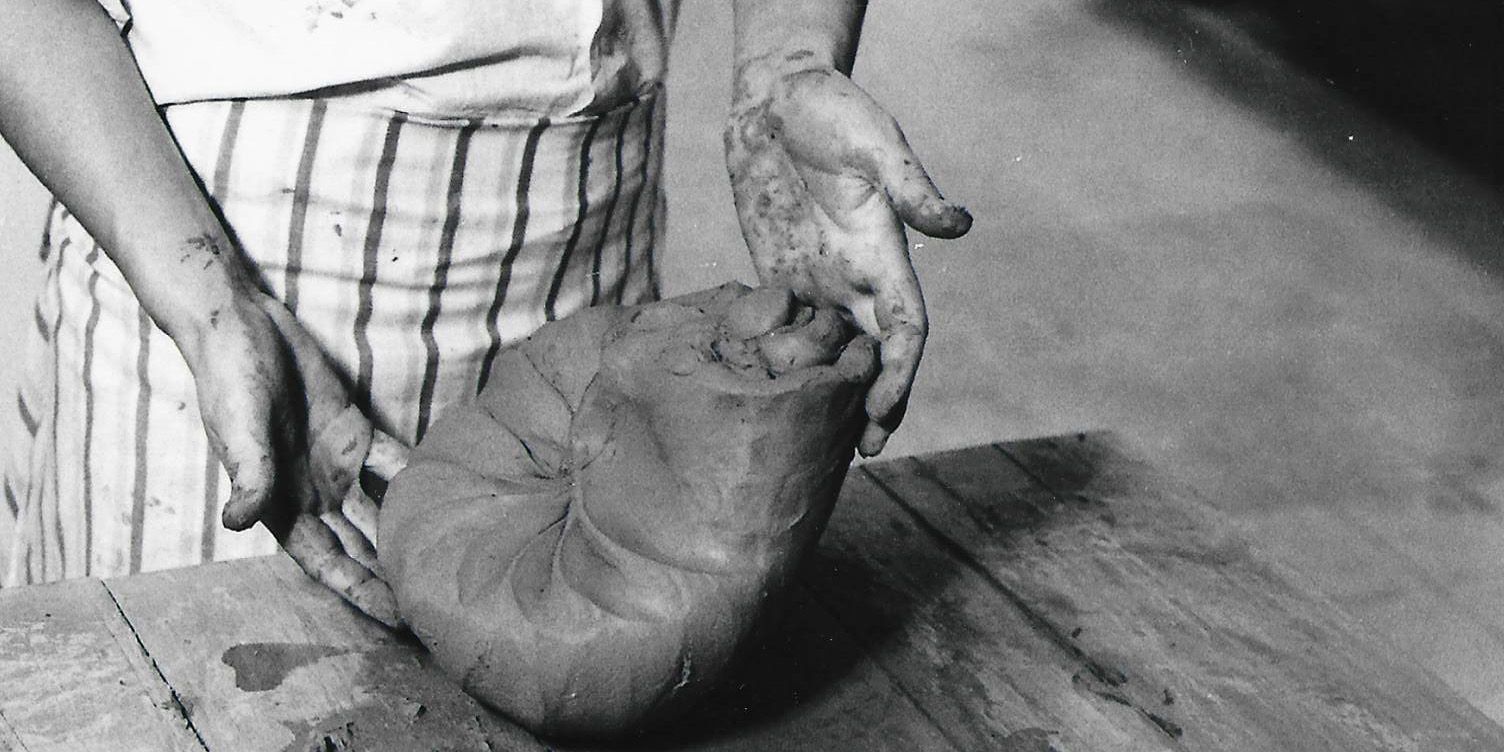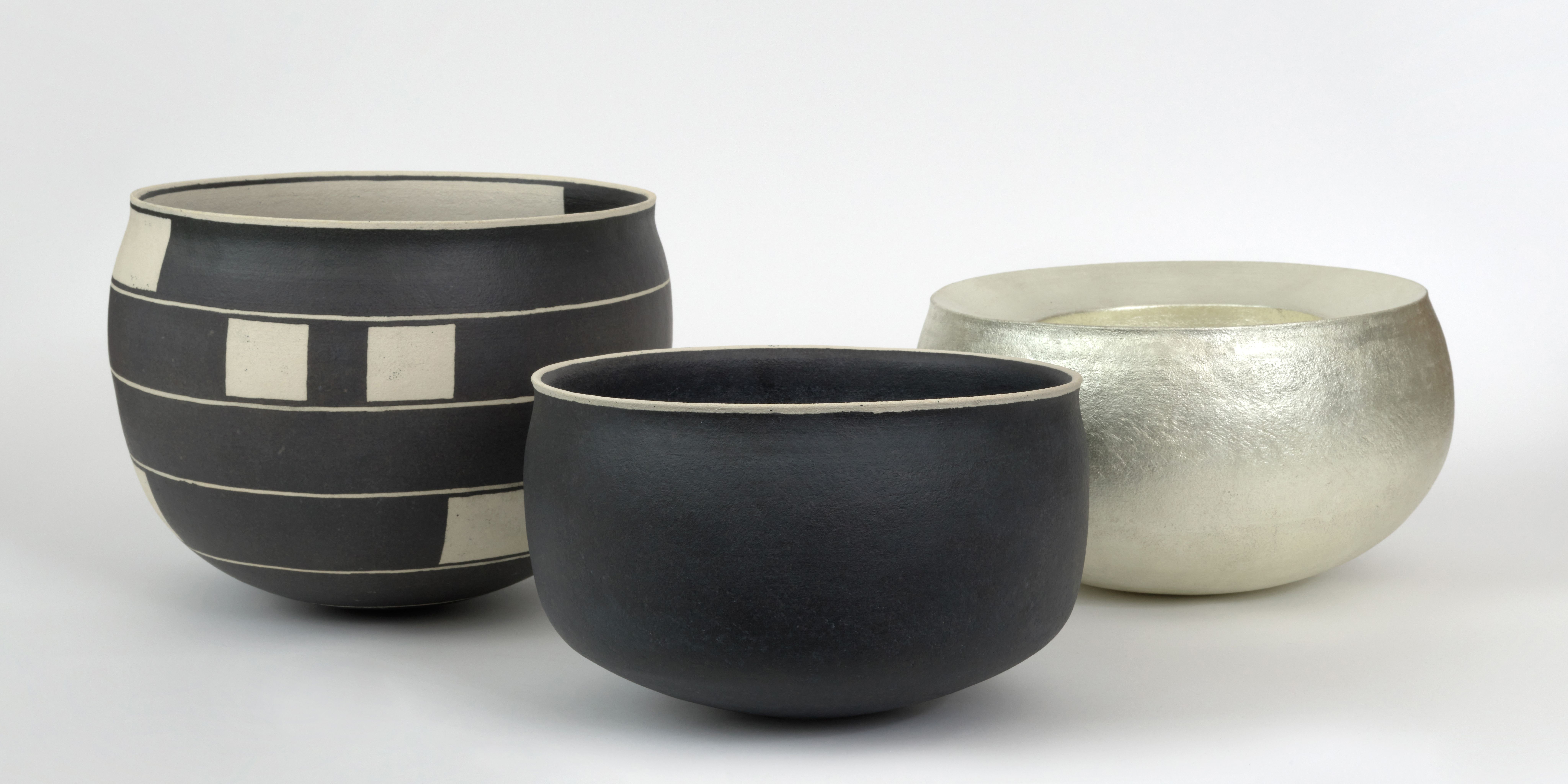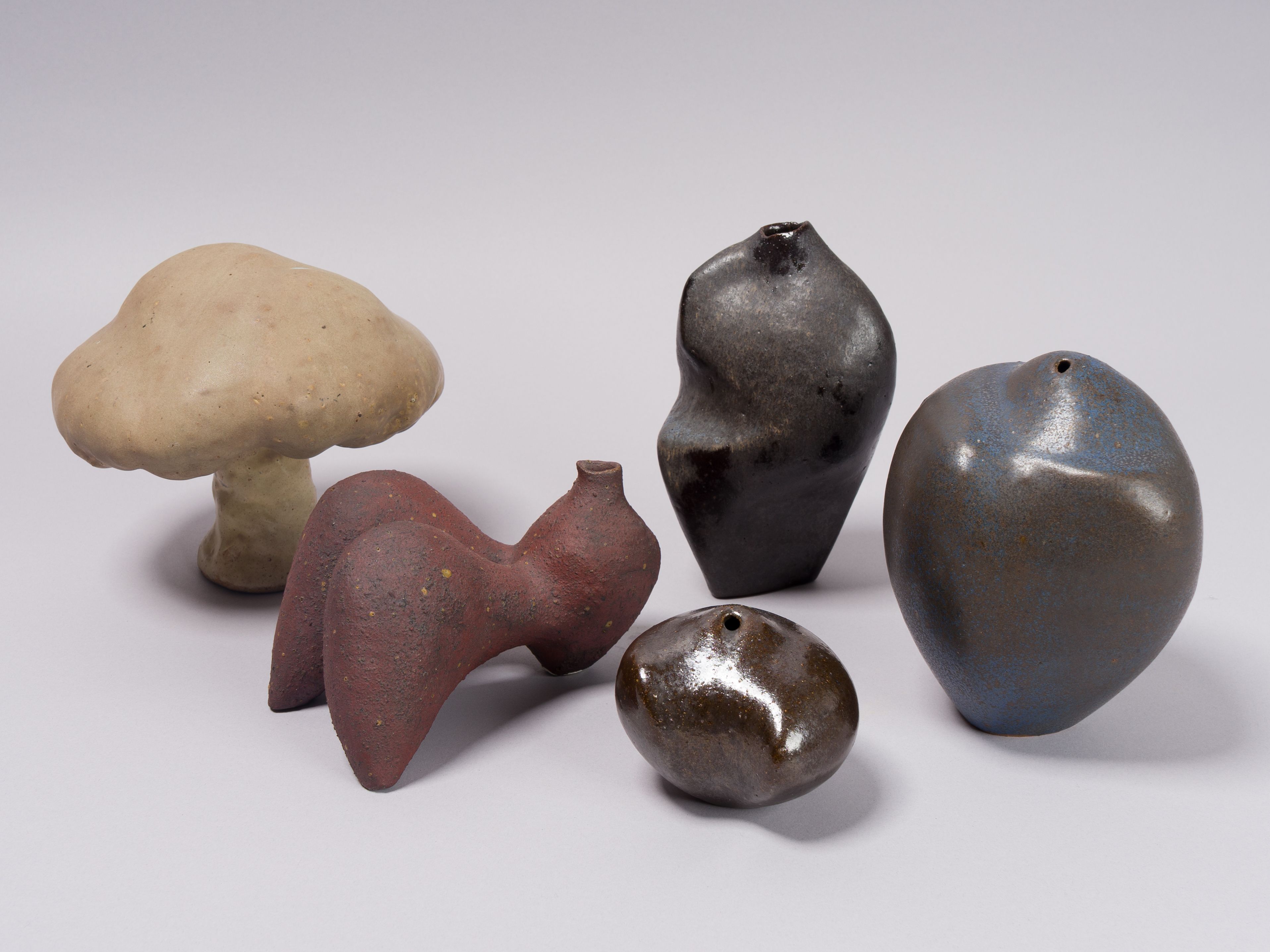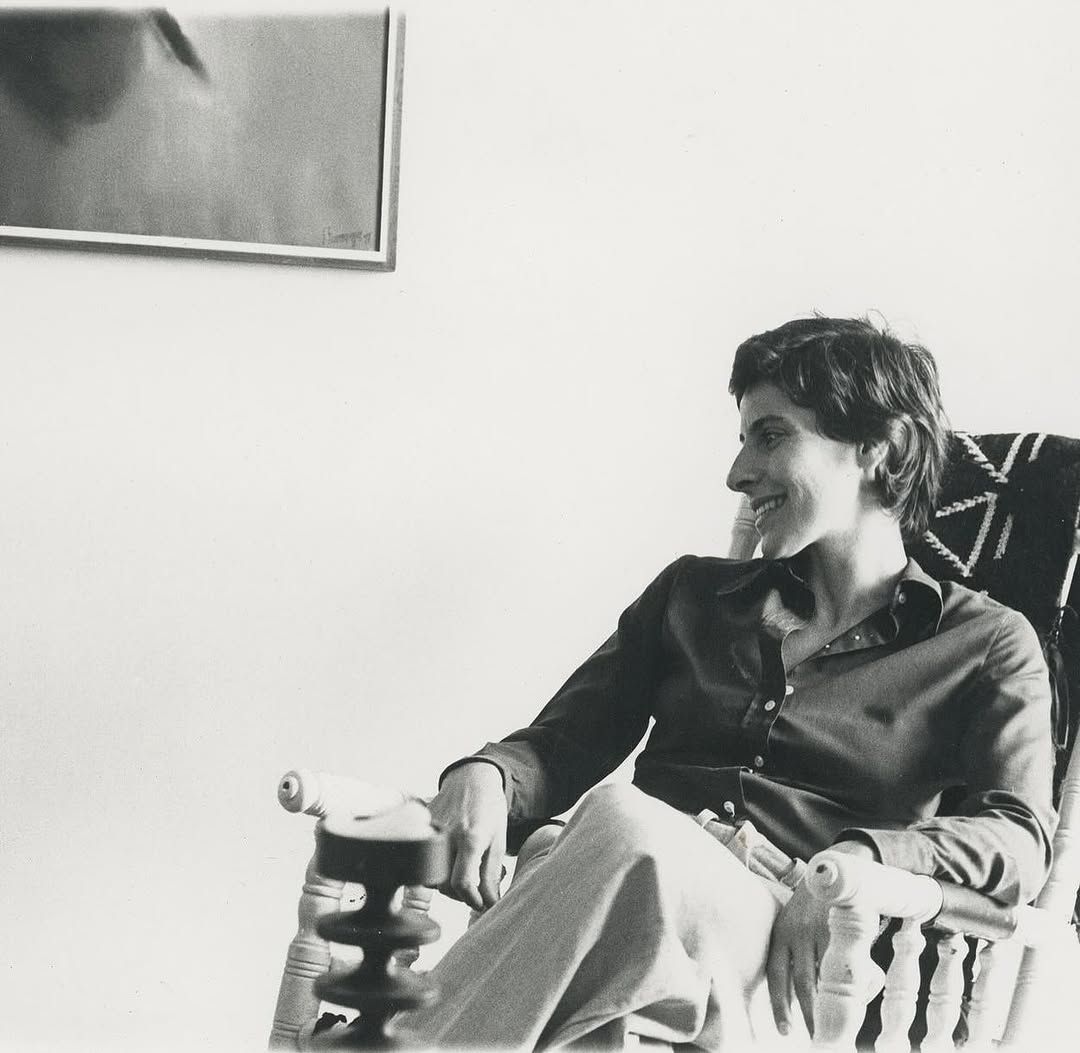
Dorothy Salhab Kazemi
b. 1942 – d. 1990
Born in Roumieh, Lebanon, 1942. Lived and worked in Beruit and France
Clay is a sensual material and there is an interaction between me and the material which almost directs itself. I simply follow that interaction from piece to piece, as I feel the forms. — Dorothy Salhab Kazemi
Artwork
Exhibitions

TEFAF 2025

Independent 20th Century
Biography

Dorothy Salhab Kazemi (1942-1990) was a pioneering figure in modern Lebanese ceramics and a leading member of Lebanon’s first generation of female artists. Her work forged a distinctive approach that bridged European modernism and Middle Eastern heritage through its powerful synthesis of Scandinavian technique and Islamic tradition.
After studying at the American University of Beirut and the School of Art and Craft in Copenhagen, Denmark, Kazemi trained with Danish ceramist Gutte Eriksen and absorbed principles from Bernard Leach’s studio pottery movement. She developed a rigorous yet organic approach to form, inspired equally by ancient forms — discovered during her work at Syrian excavation sites—and contemporary global abstraction. In 1971, she established Lebanon’s first ceramics program at Beirut University College while maintaining her studio practice in Roumieh.
By the mid-1970s, her work evolved toward corporeal forms where vessels suggested bodily references with quiet power, much like those by Barbara Hepworth—whose work especially inspired her— Louise Bourgeois, and Hannah Wilke. Her fluid, biomorphic shapes also resonate with the modernist language of Henry Moore, whose sculptures distilled the curves of nature and the human body into bold abstractions. For Kazemi, plates rise into soft breast-like shapes with glazed nipples and vessels take on the curves of reclining nudes: “Some people say my work is erotic,” she observed, “they give it a limited definition. For me, all life is an erotic manifestation.” This philosophy infused her ceramics with vitality, where wheel-thrown ridges transformed into bodily contours.
Kazemi exhibited widely throughout Lebanon and Europe during her lifetime with solo shows at Gallery One, Beirut (1968); Compass Gallery, Glasgow (1969); Contact Art Gallery, Beirut (1974); National Museum of Damascus, Syria (1975); Maison des Jeunes et de la Culture, Riberac, France (1975); and the Designmuseum Danmark, Copenhagen (1975). Her work has also been included in a number of group exhibitions, including Den Frie, Copenhagen, Denmark (1964), Arab Women Artists, Baghdad, Iraq (1980); At the still point of the turning world, there is the dance, Sursock Museum, Beirut, Lebanon in 2019, curated by Carla Chammas and Rachel Dedman; and the 16th Lyon Biennial, manifesto of fragility, Lyon, France (2021). In 2017, a retrospective of the artist’s work was held at the Modern and Contemporary Art Museum in Alita, Lebanon.
Her legacy endures in collections including Designmuseum Danmark; Sursock Museum; MACAM, Alita; and the Dorothy Salhab Kazemi Museum, Roumieh, Lebanon.
Salon 94 will present the first exhibitions of Kazemi’s work in the United States at TEFAF New York, Independent 20th Century, and later in October at the gallery’s historic exhibition space at 3 East 89th Street, with future presentations to include work by her contemporaries Afaf Zurayk and Huguette Caland. These presentations are organized with Carla Chammas.